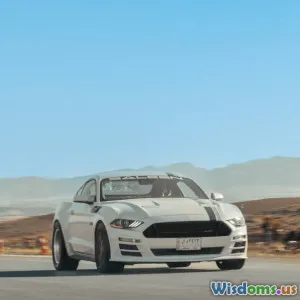
How Electric Vehicle Batteries are Recycled and Why It Matters
8 min read Explore the crucial process of electric vehicle battery recycling and its role in sustainable energy transition. (0 Reviews)
How Electric Vehicle Batteries are Recycled and Why It Matters
Electric vehicles (EVs) are accelerating the future of transportation, promising reduced carbon emissions and a more sustainable world. Yet behind this green revolution lies a less obvious but equally vital aspect: what happens to the batteries powering these cars once they reach the end of their life? Battery recycling is emerging as a critical component in the growth of electric mobility, ensuring environmental safety, resource conservation, and economic viability.
Introduction: The Hidden Challenge of EV Batteries
Imagine millions of electric vehicles hitting the road worldwide by 2030. Each relies on lithium-ion batteries — powerful, yet finite resources that degrade over time. According to BloombergNEF, by 2030, EV battery demand could reach 2,850 GWh annually, a dramatic increase from just 200 GWh in 2020. But what happens to the roughly 250,000 tons of EV batteries retired each year? Improper disposal risks toxic contamination and resource waste, making recycling essential for responsible EV adoption.
Understanding EV Battery Composition
EV batteries typically consist of complex layers of lithium, cobalt, nickel, manganese, graphite, and electrolytes wrapped in metal casings. This chemical cocktail powers electric motors efficiently but also poses environmental hazards if discarded carelessly. Precious metals like cobalt and nickel are rare and expensive, amplifying the importance of recycling to both conserve materials and reduce the carbon footprint. For example, mining cobalt in the Democratic Republic of Congo has been associated with environmental degradation and social issues, underscoring ethical motivations to recycle battery materials.
The Battery Recycling Process: A Step-By-Step Guide
1. Collection and Sorting
The first step involves the collection of spent batteries from EV manufacturers, dealers, and recycling centers. Batteries are sorted based on chemistry and condition. Advanced tracking and labeling systems help ensure safe handling, critical because damaged lithium-ion batteries can be hazardous.
2. Discharging and Dismantling
Before recycling, batteries are fully discharged to prevent fire risks. Mechanical processes then dismantle the battery modules. Specialized machinery can separate modules, cells, and casing with minimal contamination.
3. Material Recovery Techniques
There are three primary recycling approaches:
-
Pyrometallurgical Processing: High-temperature smelting recovers metals such as cobalt, nickel, and copper. However, this can consume significant energy and emit pollutants.
-
Hydrometallurgical Processing: Using chemical solvents, this method dissolves metals and separates them for reuse. It is more environmentally friendly and yields high-purity metal products.
-
Direct Recycling: An emerging technique that aims to preserve battery materials’ crystal structure to allow reuse in new batteries, potentially cutting costs and energy use significantly.
4. Refinement and Reuse
Recovered metals undergo purification to meet industry standards, then re-enter the supply chain for new battery production or other applications. Companies like Redwood Materials are pioneering circular supply chains, integrating recycling outputs directly into battery manufacturing.
Why Recycling EV Batteries Matters
Environmental Protection
Proper recycling prevents toxic substances such as cobalt and lithium from leaching into groundwater, reducing soil and air pollution. According to the International Energy Agency, battery recycling can reduce the need for raw material extraction by up to 90%, substantially lowering environmental degradation.
Resource Conservation
Lithium, cobalt, and nickel are finite and geographically concentrated. Recycling reduces dependence on vulnerable supply chains and geopolitics, ensuring long-term availability. For instance, lithium prices spiked by over 400% in recent years, partly due to supply challenges — recycling can help stabilize markets.
Energy and Emissions Savings
Mining and raw material processing constitute a significant portion of an EV's lifecycle emissions. Recycling these metals requires up to 75% less energy compared to mining new resources, directly lowering the carbon footprint of EV battery production.
Economic Benefits
The growing EV market creates a booming industry for battery materials recovery. Recycling companies and startups attract billions in investment to scale technologies, fostering innovation and job creation. Governments offer incentives to recycle batteries, recognizing its economic and environmental value.
Real-World Examples and Innovations
Major automakers like Tesla and Volkswagen incorporate battery recycling into sustainability plans. Tesla’s Gigafactory in Nevada includes recycling capabilities designed to recover up to 92% of battery materials. Meanwhile, startups like Li-Cycle leverage hydrometallurgical techniques to achieve over 95% material recovery at scale.
Regulatory frameworks are also adapting. The European Union mandates battery recycling and establishes minimum recovery efficiencies under its Battery Directive. California requires manufacturers to develop plans for collection and recycling as part of the Zero Emission Vehicle initiative.
The Road Ahead: Challenges and Opportunities
Despite progress, challenges remain. The costs of recycling processes and infrastructure need reduction to compete with virgin materials. Developing direct recycling techniques that maintain battery performance quality is an ongoing research focus. Additionally, establishing standardized battery designs and labeling can streamline recycling efforts.
Innovative approaches such as second-life applications extend battery longevity by repurposing EV batteries for energy storage systems before recycling. This holistic model maximizes resource use and supports renewable energy integration.
Conclusion: Recycling as a Pillar of Sustainable EV Growth
The promise of electric vehicles can only be fully realized with responsible lifecycle management of their batteries. Recycling transforms environmentally harmful waste into valuable resources, safeguards the planet, and unlocks economic potential. As technology advances and awareness grows, battery recycling is not just a technical necessity but a powerful catalyst in the sustainable energy revolution. Individuals, industries, and governments must work together to build circular systems that keep EV batteries out of landfills and in the cycle of innovation.
As you consider your next vehicle or energy choice, remember: supporting EV battery recycling means contributing to a cleaner, greener future—one battery at a time.
Rate the Post
User Reviews
Other posts in Renewable Energy
Popular Posts















